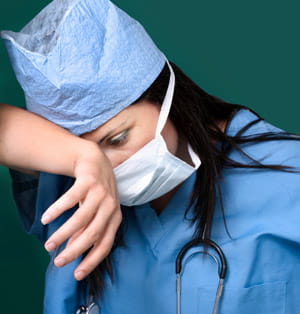
THE GMC has expressed concern at "unease" within the medical profession in its annual report on The state of medical education and practice in the UK.
In an overview to the report on trends within medical practice, the regulator noted growing pressure on doctors, a "dangerous level of alienation" felt by doctors in training, and the impact which struggling healthcare services are having on doctors’ education and training.
In an introduction to the report, GMC Chair Professor Terence Stephenson and Chief Executive Niall Dickson said: "There is a state of unease within the medical profession across the UK that risks affecting patients as well as doctors. The reasons for this are complex and multifactorial, and some are longstanding. Yet the signals of distress are unmistakable.
"There appears to be a general acceptance that the system cannot simply go on as before."
The report says the GMC has a role to play in addressing this unease by making regulation as "light touch as possible" and reassuring trainees that they are valued doctors and addressing the anger and frustration which has built up during the ongoing dispute in England between the BMA’s Junior Doctors’ Committee and the Government.
The GMC has recently launched a special review to explore how postgraduate training can be made more flexible for doctors in the future. The regulator says it also wants to play more of a role supporting those engaged in workforce planning – to make sure doctors have the right knowledge, skills and standard of behaviour to serve patient needs in the years ahead.
Statistical trends
Among other trends cited in this year’s report was a 7 per cent reduction in the number of complaints against doctors in 2015. These rose sharply in the two years to 2013 but fell in both 2014 and 2015. The majority of complaints (68 per cent) came from the public, while 9 per cent came from other doctors, 6 per cent from employers and 6 per cent from self-referrals.
The percentage of GMC complaints leading to a full investigation varied substantially, depending on the source of the complaint. Just 15 per cent of complaints made by the public in 2015 met the threshold for a full investigation by the GMC, compared with 80 per cent of complaints made by employers, 51 per cent made by the police and 31 per cent made by other doctors.
Over 2,800 investigations concluded in 2015 in which 5 per cent led to warnings, 6 per cent led to conditions or undertakings and 7 per cent led to suspension or erasure. More than two-thirds were closed with no further action and 14 per cent were closed with advice given to the doctor.
The medical register increased by 11 per cent in the period from 2011 to 2015 but the growing number of unlicensed doctors following revalidation has meant that the number of doctors licensed to practice in the UK has remained steady, increasing by only 1 per cent over the period.
Ethnic diversity in the UK medical profession increased over the period from 2011 to 2015, with a 22 per cent rise in the number of specialists who described themselves as black and minority ethnic (BME) against an 8 per cent increase in specialists generally, and an 18 per cent increase in the number of GPs defining themselves as BME against a 2 per cent increase in GPs generally.
There is a trend toward fewer licensed doctors from abroad practicing in the UK, with 10 per cent fewer IMGs (International Medical Graduates) and 2 per cent fewer EEA graduates in 2015 compared with 2011. Doctors in training were increasingly likely to have gained their medical degree (primary medical qualification) in the UK, with UK graduates making up 85 per cent of all doctors in training – up from 80 per cent in 2012.
Growth in the percentage of female doctors appears to be slowing. GMC analysis found that the proportion of registered female doctors grew from 43 per cent in 2011 to 45 per cent in 2015 but growth in younger female doctors slowed compared with the growth in younger male doctors – the proportion of male doctors under 30 years old increased by 28 per cent from 2011 to 2015 while that of female doctors increased by only 6 per cent.
This page was correct at the time of publication. Any guidance is intended as general guidance for members only. If you are a member and need specific advice relating to your own circumstances, please contact one of our advisers.
Save this article
Save this article to a list of favourite articles which members can access in their account.
Save to library
